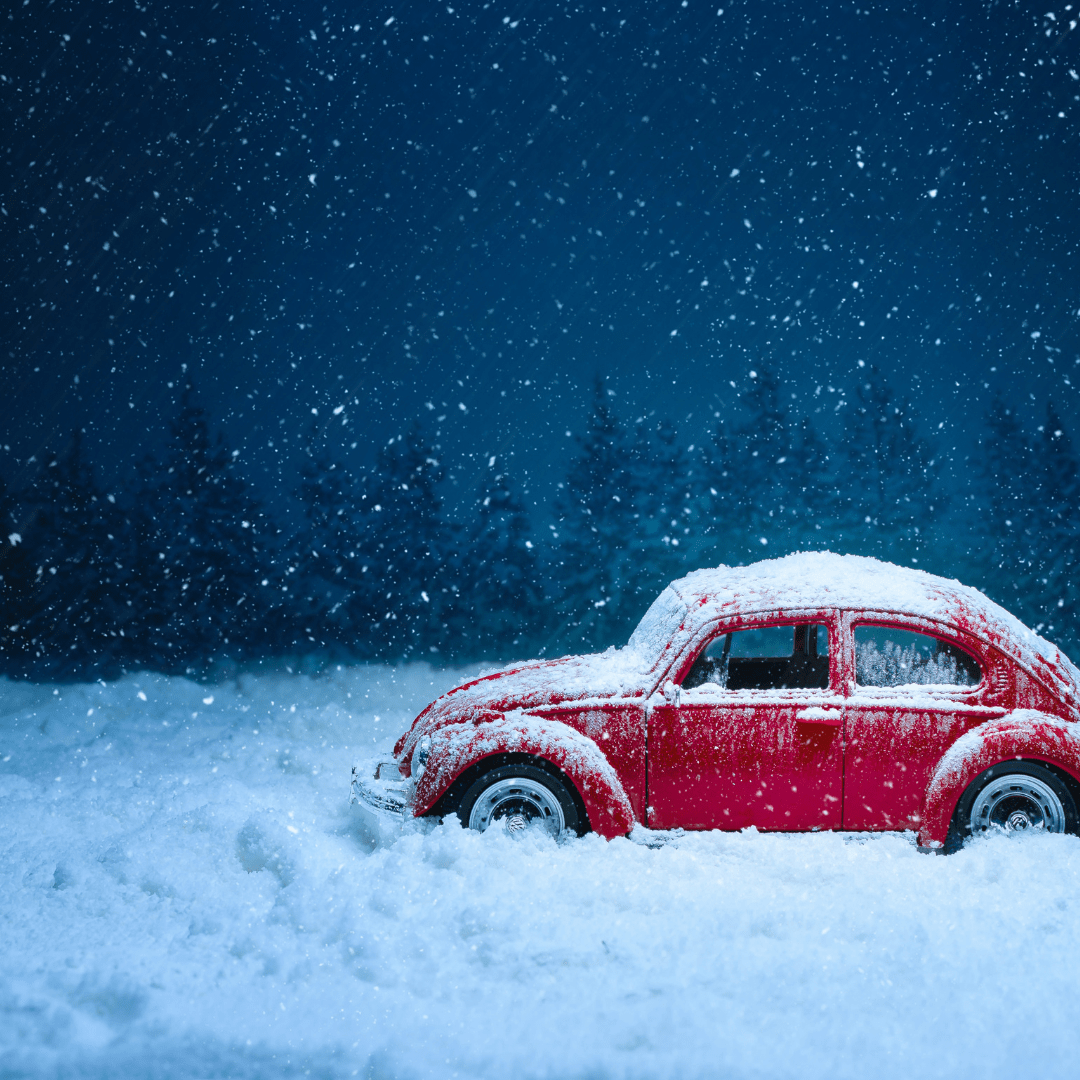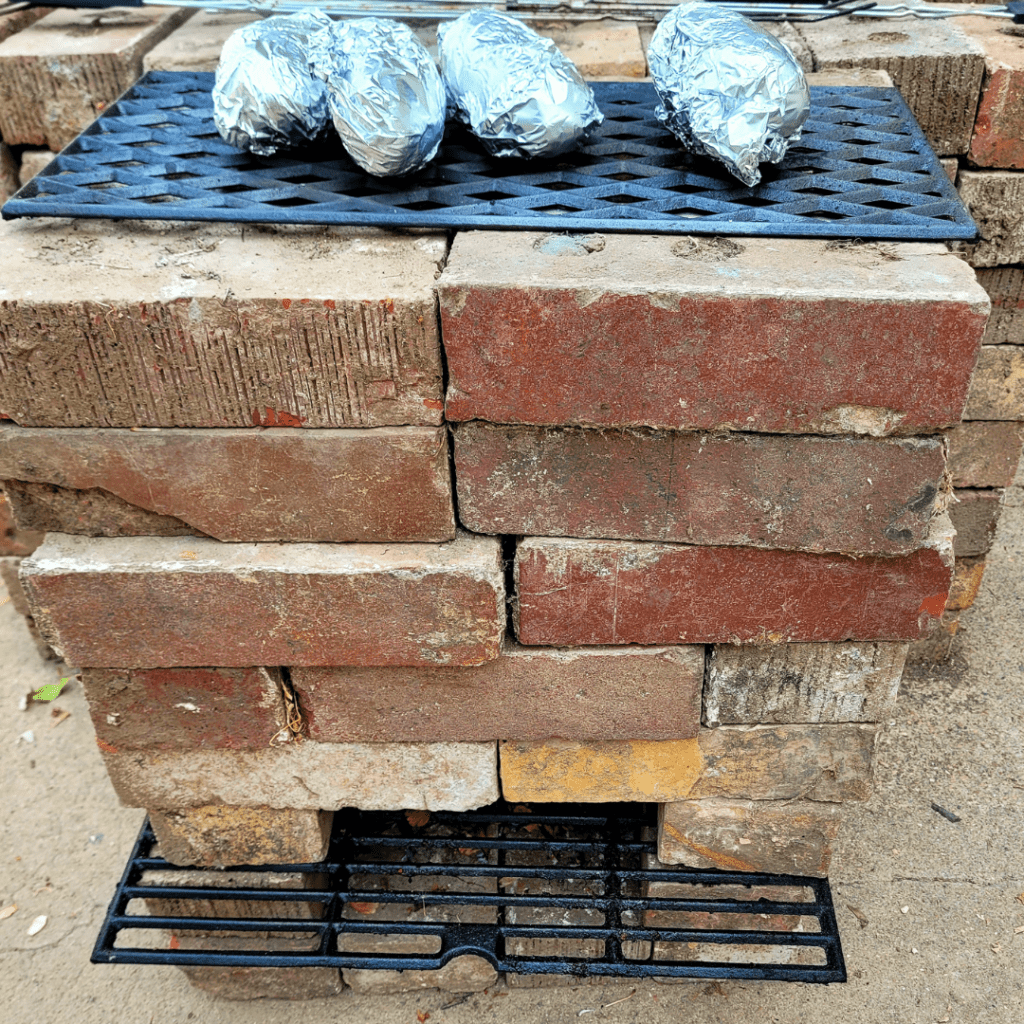Is your car ready for winter? Check out this ultimate checklist for your winter emergency car kit and stay safe on snowy, icy roads this season.
Winter can hit hard, and being stranded in the cold is something no one wants to experience. That’s why having a fully stocked winter emergency car kit is essential. From checking your tires and battery to packing blankets, snacks, and other survival essentials, a little preparation now can save a lot of stress later. In this guide, I’ll walk you through the ultimate winter car checklist so you—and your car—are ready for whatever icy roads throw your way.
This is a pinnable post. Tap or hover over any image in this post to pin to your Pinterest Boards.
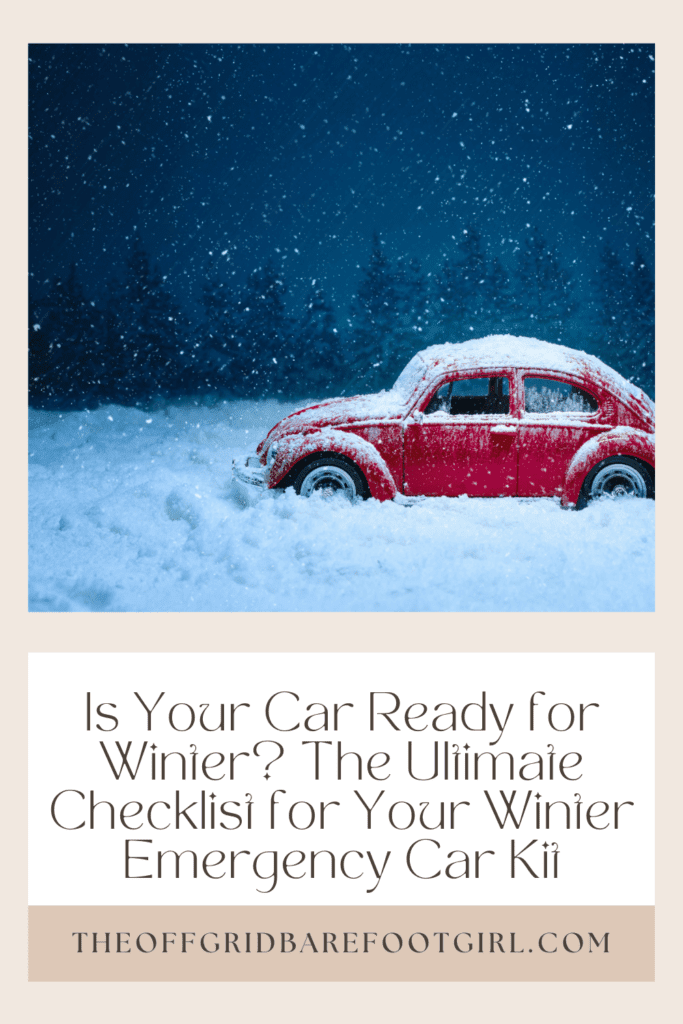
Importance of a Winter Emergency Car Kit
Understanding the Risks of Winter Driving
Winter driving can be a treacherous adventure. Slippery roads, reduced visibility, and unexpected icy patches can turn a simple trip to the grocery store into a white-knuckle experience. It’s important to be prepared for the worst-case scenario to ensure your safety and the safety of others on the road.
Winter driving can be treacherous and unpredictable, so it’s essential to comprehend the potential hazards before hitting the road. The most obvious risk is icy or slippery surfaces, making it difficult for vehicles to maintain proper traction. Black ice, a transparent coating of ice on the road, is particularly dangerous as it blends in with the pavement and catches drivers off-guard. Snowfall creates reduced visibility, decreasing reaction time for both the driver and other motorists.
Additionally, heavy snow accumulation could result in buried vehicles or obstructed roads. Freezing temperatures can also cause vehicle malfunctions such as frozen brake lines or dead car batteries. It’s crucial to exercise caution while driving during winter months, ensuring appropriate speed and maintaining a safe distance from other vehicles to mitigate these risks and ensure a safe journey.
The Crucial Role of a Winter Emergency Car Kit
When the going gets tough, a winter emergency car kit becomes your trusty sidekick. It’s like having a superhero in the trunk of your car, ready to save the day. This kit is your lifeline in case you find yourself stranded in the cold for an extended period of time. This kit should include essentials such as extra blankets, gloves, and hats to keep you warm when temperatures drop. And don’t forget about some energy bars or non-perishable snacks to keep those hunger pangs at bay while you wait for help.
Plus, a flashlight with extra batteries will be your guiding light through any dark situation. Adding an ice scraper, shovel, and sand or kitty litter for traction can be a literal lifesaver when dealing with slippery roads or getting stuck in snowbanks. So folks, don’t take winter lightly—pack up that car with these essentials and be ready to tackle any icy situation that comes your way! So, buckle up, and let’s dive into the essential supplies you need to pack.
Essential Winter Car Supplies

Warm Clothing and Blankets
Winter weather is notorious for its bone-chilling temperatures. Make sure you have extra warm clothing and blankets in your emergency kit. It’s better to have too many layers than to shiver uncontrollably while waiting for help.
Don’t forget to include extra blankets and supplies for any potential passengers you may have with you. You want to ensure everyone will be safe and comfortable in your car should you experience a winter breakdown. Always include extra supplies and entertainment activities for young children to help keep them calm while waiting for help.
Food and Water
Hunger and thirst can strike at the most unexpected times, especially when you’re stuck in a snowstorm. Pack non-perishable food items like granola bars and dried fruit, along with bottled water or water purification tablets. Stay nourished and hydrated while you wait for the rescue.
Flashlights and Batteries
When darkness envelops the wintry landscape, a trusty flashlight can light the way. Make sure you have a reliable flashlight and extra batteries in your emergency kit. It will help you navigate your surroundings and alert rescuers to your presence.
Preparing Your Vehicle for Winter Conditions
Checking and Replacing Worn Tires
Your car’s tires are the only point of contact between your vehicle and the snowy, icy roads. Ensure they are up for the challenge by inspecting them for wear and tear. Consider investing in winter tires for increased traction and stability.
Ensuring Proper Tire Pressure
Cold temperatures can cause your tire pressure to drop, potentially compromising your vehicle’s handling and fuel efficiency. Check your tire pressure regularly during the winter months and inflate them to the recommended levels.
Checking and Topping Up Fluids
Fluids are the lifeblood of your car, especially during the winter. Check your oil, coolant, and windshield washer fluid levels to make sure they are topped up. Properly functioning fluids will help your car withstand the harsh winter conditions.
Must-Have Tools and Equipment for Winter Emergencies

Roadside Emergency Kit
Having a roadside emergency kit is crucial, especially in the winter. This kit includes gloves, a digital air compressor, a tire inflator, a first aid kit, jumper cables, a tow strap, and a flashlight.
Ice Scrapers, Extendable Snow Brushes, and Snow Shovels
Mother Nature’s winter wonderland can quickly turn into a snow-covered roadblock. Keep a sturdy snow shovel in your car to dig yourself out of tight spots. An ice scraper is also essential for clearing your windshield and windows from frost and ice.
Jumper Cables
Cold temperatures can take a toll on your car’s battery, leaving you stranded in the middle of nowhere. Be prepared with a set of jumper cables to jump-start your vehicle or help others in need with dead or weak batteries.
Tire Chains or Traction Mats
Sometimes, even the best winter tires might not be enough to conquer icy hills or slippery surfaces. That’s where tire chains or traction mats come to the rescue. These handy tools provide extra grip and traction, getting you out of sticky situations.
First Aid Kit
Keep a large first aid kit with an easily accessible bag to include everything needed to perform basic first aid during roadside emergencies, traveling, camping, or hiking. Keeping a well-stocked first aid kit in your car is crucial!
Digital Auto Air Compressor
Having a portable air compressor in your car to inflate your tires is important. Be sure to get one that is fast and easy to use to help you get back on the road during a snowstorm and get you back to safety. Being stranded on the roadside in the winter is extremely dangerous!
Tow Straps
Keep heavy duty tow straps in your car, especially during the winter months to help you get out of that snowy bank or ditch and get you back on the road safely.
Tips for Staying Safe in Cold Weather Situations

Driving Techniques for Snowy or Icy Roads
When driving on snowy or icy roads, it’s crucial to adjust your driving techniques for the conditions. Slow down and maintain a safe following distance from the vehicle in front of you. Avoid sudden movements, such as hard braking or accelerating, as these can cause your tires to lose traction. Instead, brake gently and accelerate slowly to help prevent skidding.
Proper Use of Brakes and Steering on Slippery Surfaces
When driving on slippery surfaces, such as ice or packed snow, it’s important to be extra cautious with your use of brakes and steering. Avoid slamming on the brakes, as this can cause your wheels to lock up and make it difficult to regain control. Instead, apply gentle pressure and pump the brakes if necessary. Similarly, make smooth and gradual steering inputs to maintain stability.
Recognizing and Reacting to Black Ice
Black ice is one of the biggest hazards during winter driving. It’s a thin, transparent ice layer that often appears to be the same color as the road surface, making it difficult to spot. If you suspect you’re driving on black ice, stay calm and avoid sudden maneuvers. Reduce your speed and gently steer in the direction you want to go, without overcorrecting. Also, keep an eye out for shiny or reflective patches on the road, as they could indicate the presence of black ice.
Maintenance and Inspection Checklist for Winter Readiness
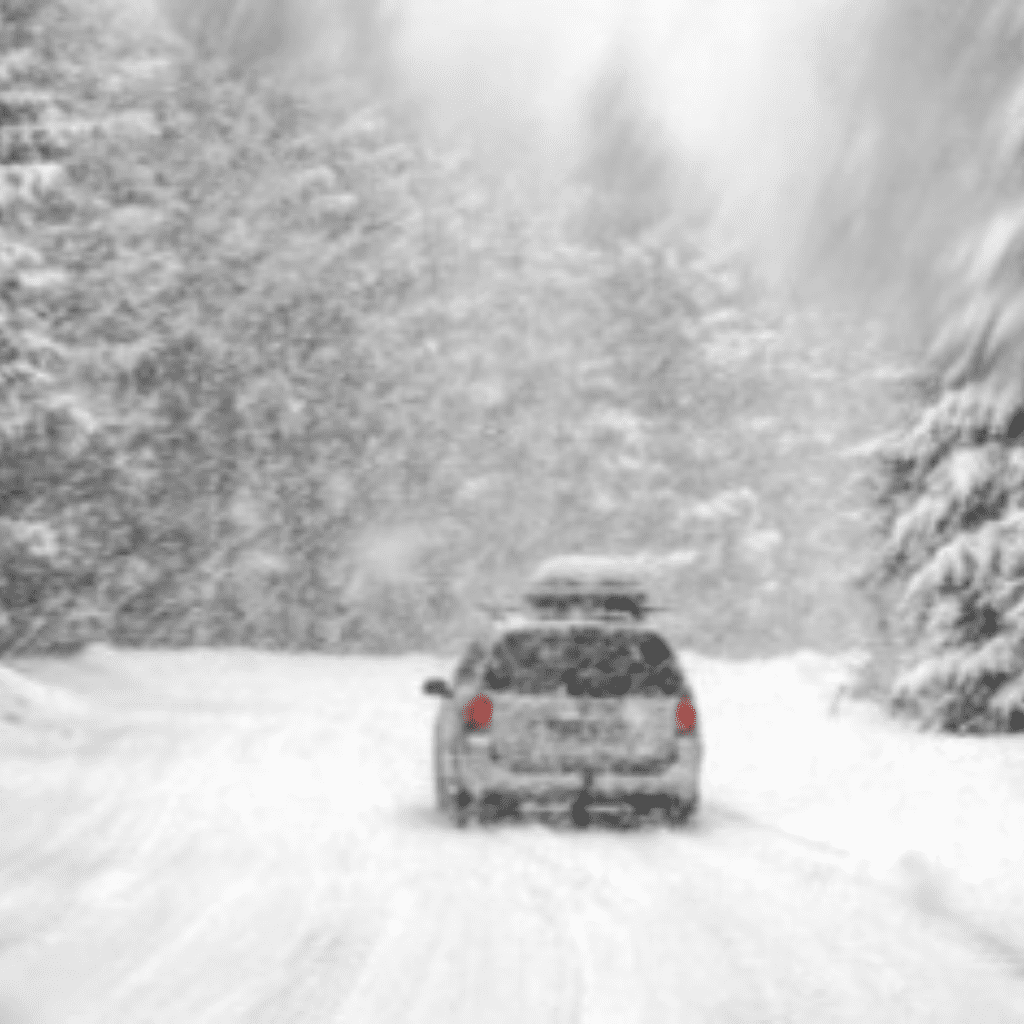
Battery Maintenance and Testing
Ensure your car’s battery is in good condition for winter by checking the terminals for corrosion and making sure they are tightly connected. Consider having a professional test the battery’s cold cranking amps (CCA) to ensure it has sufficient power for cold weather start. If your battery is old or showing signs of weakness, it may be wise to replace it before winter hits.
Checking and Replacing Worn Wiper Blades
Having functional wiper blades is essential for maintaining good visibility in winter weather. Inspect your wiper blades for signs of wear, such as cracking or splitting. If they are not clearing your windshield effectively, replace them with new ones. Also, make sure to use winter-rated or all-weather windshield wiper fluid to prevent freezing on your windshield.
Inspecting and Replacing Exterior Lights
Properly functioning exterior lights are crucial for visibility and safety during winter. Check that all your headlights, taillights, brake lights, and turn signals are working properly. Replace any burnt-out bulbs and ensure they are correctly aligned for optimal visibility. It’s also a good idea to clean the lenses to remove any dirt or grime that can reduce their effectiveness.
Additional Considerations for Snowy and Icy Conditions
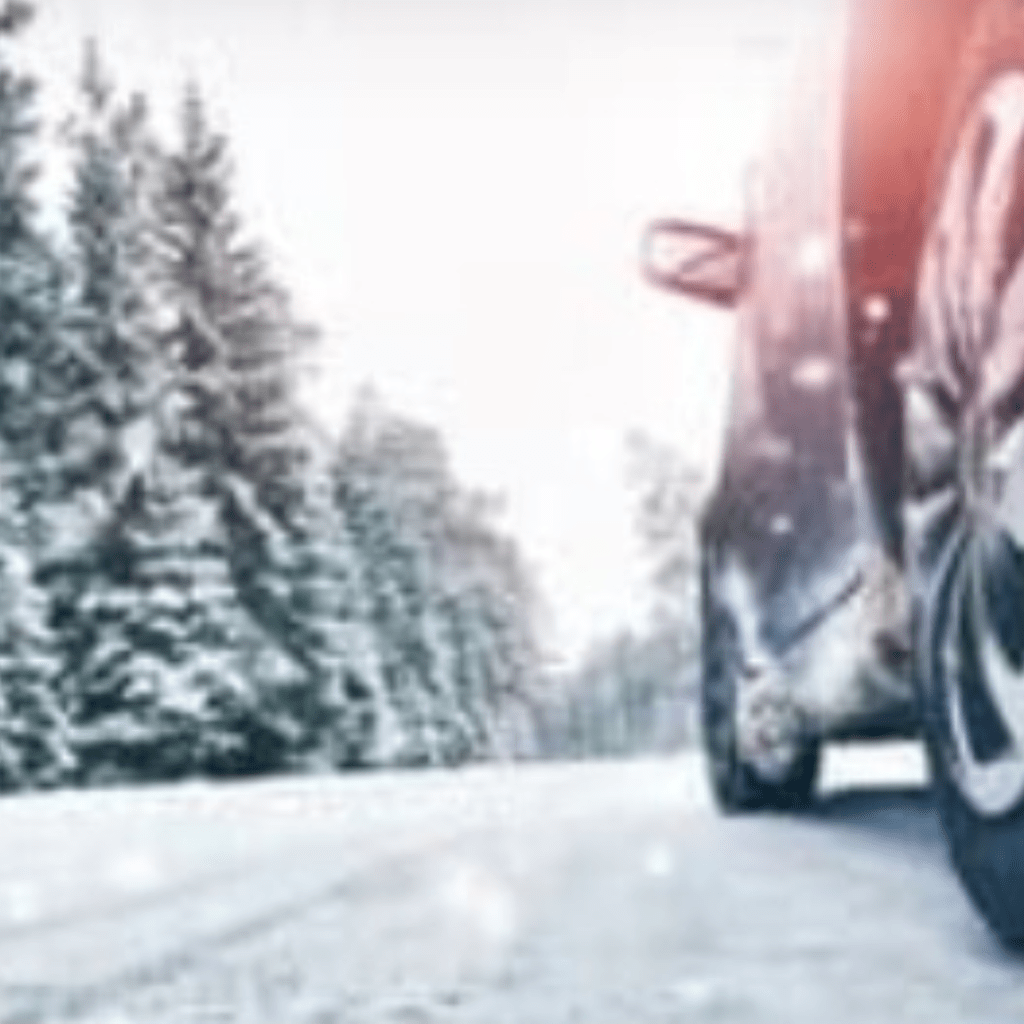
Using Antifreeze and De-Icer Properly
Antifreeze is vital for preventing your engine’s coolant from freezing in cold temperatures. Check your vehicle’s coolant levels and make sure it’s a 50/50 mixture of antifreeze and water. Additionally, keep a bottle of de-icer spray handy to quickly clear ice from your windshield and windows.
Preparing for Extended Road Delays
During winter, it’s not uncommon to experience extended road delays due to accidents or severe weather conditions. Be prepared by keeping essential items in your car, such as blankets, extra clothing, non-perishable snacks, and drinking water. Also, ensure you have a fully charged cell phone and a car charger to stay connected and call for help if needed.
Understanding the Dangers of Carbon Monoxide
When driving in snowy conditions, it’s important to be aware of the dangers of carbon monoxide (CO) poisoning. Avoid running your car’s engine in an enclosed space, such as a garage, even if it’s to warm up. Always make sure your vehicle’s exhaust pipe is clear of snow or ice to prevent CO buildup in the cabin. If you’re parked in a snowbank, periodically check for obstructions to ensure the exhaust is venting properly.
Be Prepared for Winter Driving
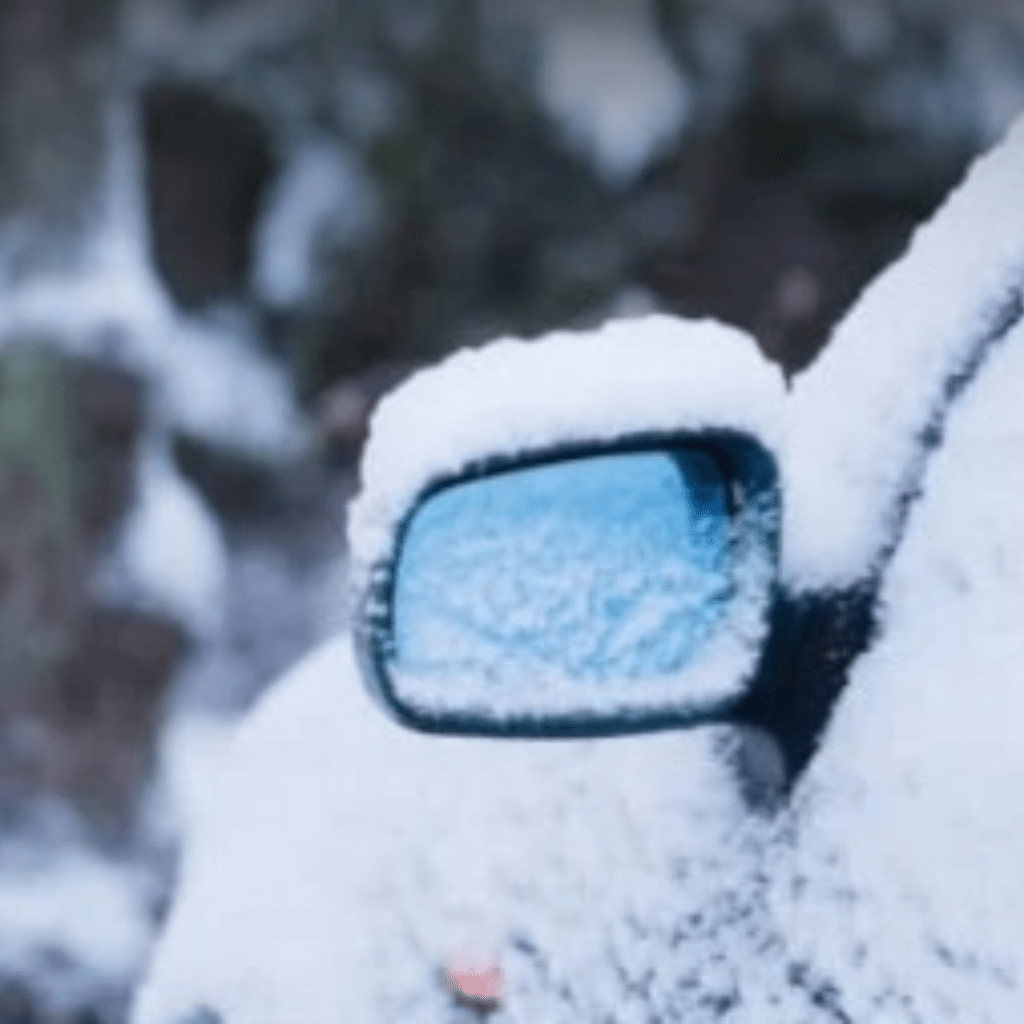
Driving on icy roads requires caution and a few extra tricks. Reduce your speed, increase your following distance, and avoid any sudden directional changes. If you start to slide, gently turn your steering wheel in the direction of the slide to regain control. And always keep your eyes peeled for patches of black ice – they’re tricky little devils that love to surprise you.
Driving on snowy roads is like dancing with a partner who’s a bit unpredictable. Slow and steady is the name of the game here. Keep your speed down and use extra caution when braking or accelerating. If you encounter deep snow, avoid sudden movements that could get you stuck. And remember, turning the steering wheel is like making suggestions to your car – it may or may not cooperate, but hey, at least you tried.
Dealing with Black Ice and Frozen Slush
Black ice and frozen slush are the sneaky villains of winter driving. Treat them like the enemies they are by reducing your speed and avoiding sudden braking or acceleration. If you do find yourself on black ice, try to stay calm and let your car pass over it without any abrupt movements. Trust me, saving your cool is much easier than saving your car from a spinout.
Driving in Fog, Snowstorms, and Blizzards
Winter driving can be challenging, especially when faced with low visibility caused by fog, snowstorms, or blizzards. In such conditions, it’s crucial to adjust your driving accordingly. Slow down and increase your following distance to allow for sudden stops or obstacles on the road. Use your vehicle’s fog lights or low beams to improve visibility without blinding other drivers. Remember, no destination is worth sacrificing your safety, so consider postponing your trip if the weather becomes too severe.
Safely Operating in Frigid Temperatures
Extreme cold can affect both your vehicle and yourself. Before hitting the road, make sure your car is properly warmed up to prevent any mechanical issues. Dress in warm clothing and keep extra layers, blankets, and gloves in your car in case of emergencies. Remember to stay vigilant, as extreme cold can affect your concentration and reaction time. Take breaks if necessary, and don’t hesitate to seek shelter if conditions become unsafe.
Proper Use of Headlights and Defrosting Techniques
Headlights are vital for maintaining visibility during winter driving, but it’s important to use them correctly. Always use your headlights when visibility is reduced, even during daylight hours. Additionally, keep your headlights clean to maximize their effectiveness. When it comes to defrosting techniques, make sure to use your vehicle’s defrost setting to clear your windshield and windows. Avoid using hot water or scraping with sharp objects, as these can damage your car.
Remember, winter driving doesn’t have to be a nightmare. By understanding the hazards, preparing your vehicle, developing essential skills, and applying best practices, you can navigate the winter wonderland with ease. So buckle up, turn up the heat, and embrace the adventure that is winter driving!
Checking Weather and Road Conditions Beforehand
Before embarking on a winter road trip, check the weather forecast and road conditions for your intended route. This will help you anticipate any potential hazards or delays. Stay informed and stay safe by monitoring updates throughout your journey.
Staying Updated on Winter Driving Tips and Advice
Winter driving techniques and advice evolve over time, so it’s essential to stay updated on the latest recommendations. Follow reputable sources, such as government transportation agencies or automobile associations, for valuable tips and information. The more knowledgeable you are about winter driving, the better prepared you’ll be to tackle any challenges that come your way.
Conclusion
As winter approaches, it’s essential to prioritize your safety on the road. By following this ultimate checklist for your winter emergency car kit, you can ensure that you are prepared for any winter driving situation. From stocking up on essential supplies to performing necessary maintenance tasks and equipping your vehicle with the right tools, taking these steps will give you peace of mind and confidence during the colder months. Remember, being prepared can make all the difference when it comes to staying safe on icy roads and dealing with winter emergencies. Stay vigilant, drive cautiously, and stay warm and secure on your winter journeys. Stay safe out there!
Ensure you and your family are prepared for any situation by checking out The Complete Guide to Emergency Preparedness: Everything You Need to Thrive in Any Situation.
Winter Emergency Car Kit Supplies Printable List
Download your FREE Winter Emergency Car Kit Supplies Printable List to take shopping with you.
Frequently Asked Questions
1. Why is a winter emergency car kit important?
A winter emergency car kit is important because it helps you prepare for unexpected situations that can arise during winter driving. It includes essential supplies, tools, and equipment that can keep you safe and comfortable if you experience a breakdown, get stuck in the snow, or face other winter-related emergencies.
2. What should be included in a winter emergency car kit?
A winter emergency car kit should include warm clothing and blankets, food and water, flashlights and batteries, a snow shovel and ice scraper, jumper cables, tire chains or traction mats, and other necessary tools and supplies. It is important to customize your kit based on your specific needs and the climate of your region.
3. How often should I check and maintain my winter emergency car kit?
It is recommended to check and maintain your winter emergency car kit at the beginning of each winter season and periodically throughout the season. Regularly inspect the supplies and equipment, replace expired items, and ensure that everything is in good working condition. Additionally, check the condition of your kit after any long trips or severe weather incidents.
4. Are there any additional considerations for extreme cold weather conditions?
Yes, extreme cold weather conditions require additional considerations. Apart from the standard winter emergency car kit, you should also consider carrying extra fuel, a portable heater, and additional warm clothing layers. It is important to monitor weather forecasts, have a plan for shelter or alternative routes, and inform someone about your travel plans in case of extreme weather conditions.
Summary
I hope I have inspired you to live sustainably with these tips and products.
If you were encouraged by this post, I invite you to check out my FREE Printables Page for fun free printables, planners, and charts.
ENTER MY FREE Printables Page HERE
Here are some more of my gardening inspiration posts to check out!
Ideas for Rustic Living Room Vibes You’ll Love All Year Round!
How to Prep Your Home for Chilly Fall Nights
Bring Back the Magic of Fireflies and Lightning Bugs with Solar Power!
The Ultimate Portable Power Bank for Homesteaders and Preppers!
A Bug Out Bag That’s Actually Ready — When You Need It Most!
Magical Ways to Use Fairy Lights in Your Off-Grid Home
How to Live a Cozy Off-Grid Life
The Best Off-Grid Kitchen Tools for Indoors (No Power Needed!)
DIY Solar Made Simple: How I Powered My Off-Grid Life with Practical Preppers!
Sleeper Cells in America: What You Need to Know Now!
How People Are Surviving in Broken Cities with Broken Systems
When the World Hurts, We Prepare with Purpose
How to Live On Raw Land: Everything You Need to Know!
How to Do Off-Grid Laundry with Eco-Friendly Laundry Detergent!
Hollywood on Fire! What Secrets Are In the Ashes?
FEMA Concentration Camps? Are Echos of the Past Returning?
How Likely Is a Russian EMP? One Pulse Could Black Us Out!
What Dark Secrets Lie in The Bird Flu Symptoms?
The Blackout Sun: Who Is Blacking Out Our Sunlight?
More Posts!
How to Bug-In During a Deep Freeze!
‘FOGVID-24?’ What’s in the Mysterious Fog That’s Making Everyone Sick?
From Snow to Sow: Plan Your Spring Garden Now!
11 Fun Ways to Brighten Your Spring Garden with Personality
Top 10 Spring Garden Crops to Harvest in 30 Days and Eat Now!
The Best Survival Crops for Caloric Survival
More Posts!
My Victory Garden: What I Learned from 5+ Years
Why Every Family Should Have a Victory Garden in Their Backyard Now!
The Best Perennials for a Long-Term Survival Garden
The Best Essential Oils for Plants That Repel Garden Bugs
How to Grow Green Garden Peas: Perfect Plump Peas!
Hugelkultur: Does This Epic Pioneering Method Actually Work?
9 Ways to Celebrate Earthing Day in Your Garden!
Gardening Indoors: Secrets of Growing Your Food Inside!
How to DIY a Milk Jug Drip Irrigation System!
Why Cedar Mulch Is The Perfect Natural Weed Barrier
Gardening Projects
Onions: How to Grow Onions for Storage
Peas: How to Grow Garden Peas for a Bumper Crop
Carrots: How to Grow Carrots for a Bountiful Harvest
Prep Your Garden for Spring Planting with These Expert Tips!
How to Grow a Prepper Garden to Survive and Thrive
The Best Garden Tools You Need for a Productive Season
Fastest Growing Vegetables for Your Survival Garden
How to Grow Marigolds As Pest Control In Your Vegetable Garden
Must-Have Tools for a Successful Balcony Vegetable Garden
How to Effectively Combat Powdery Mildew in Your Garden
The Best Tips for Organic Gardening
How to Release Ladybugs In Your Garden for Organic Pest Control
More Posts!!
The Best Garden Snail Control Strategies
The Best Spring Vegetables to Grow in Your Garden
Seed Starter Mix: How To Make Your Organic Seed Starter Mix At Home
How to Grow a Productive Canning Garden
How to Plant and Grow a Salsa Garden
Easiest Heirloom Vegetable Seeds to Grow Now
How to Use the Hand Twist Claw Tiller: Tackling Tough Soil
More Fun Gardening Posts to Check Out!
Planning Your Garden: How to Plan a Vegetable Garden: Expert Green Thumb Tips!
Winterizing the Garden: How to Winterize Your Vegetable Garden: Step-by-Step Checklist
Mulching the Garden: How to Make Leaf Litter Mulch
Grow a Pumpkin Patch: How to Grow a Pumpkin Patch in Your Backyard
How to Grow a Fall Garden: 9 Best Fall Crops
Clever Ways to Incorporate Indoor Composting into Your Home
How to Start Composting for the Garden: A Step-by-Step Guide
The Ultimate Guide to Composting in Your Suburban Backyard
Why I Built A Survival Garden in My Backyard
16 Best Medicinal Herbs to Grow in Your Garden Now
Blessings,
The Off Grid Barefoot Girl

